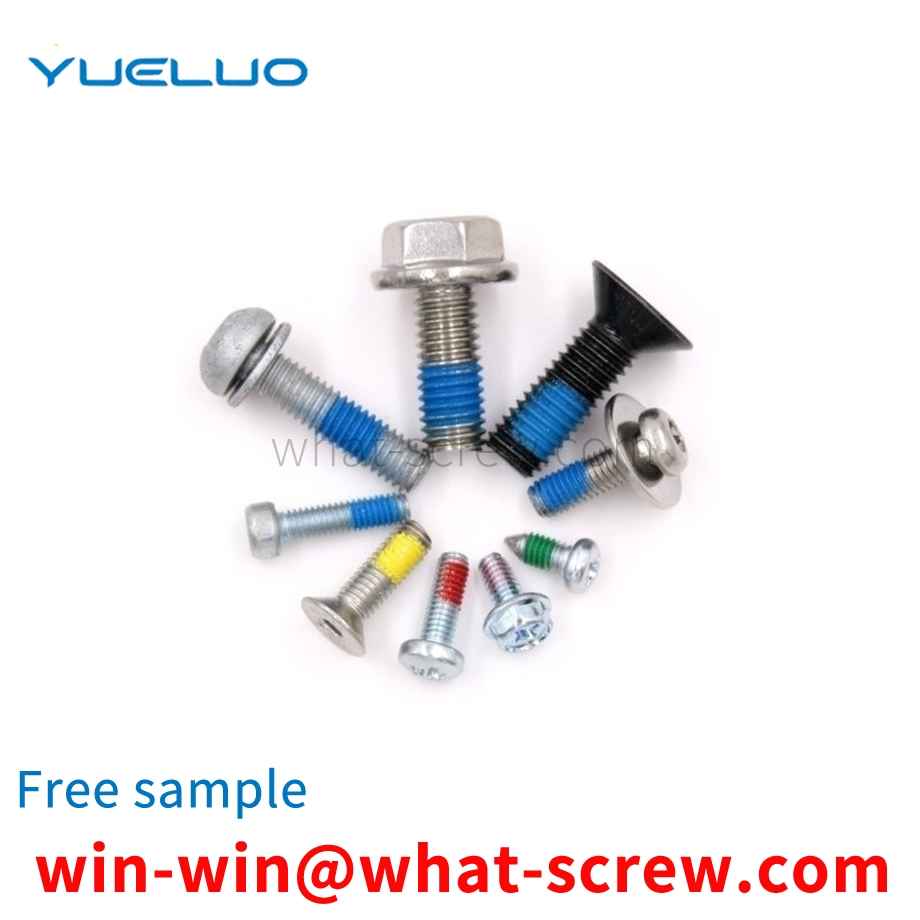Gaskets are mechanical components used for cooperation between two objects, which play a role in preventing pressure, corrosion and leakage of pipes from natural thermal expansion and contraction between two objects. By using the gasket in conjunction with the bolt and nut, the gasket can increase the contact area between the bolt and nut and the metal parts, and play the role of buffering and shock absorption to prevent the thread from loosening.
The pressure riveting nut is divided into free-cutting steel pressure riveting nut S type, stainless steel pressure riveting nut type CLS, stainless iron pressure riveting nut SP type and copper and aluminum pressure riveting nut CLA type, which should be used in different environments. . Sizes are usually from M2 to M12. There is no unified national standard for rivet nuts, and they are often used in chassis cabinets and sheet metal industries. S series, CLS series, SP series pressure riveting nuts use the internal thread as a simple method to install in precision sheet metal products, and use small and precise nuts for reliable fixing to completely process the side plate of the sheet metal. The nut is inserted into the hole of the metal plate, and the inlay strengthening function is completed by pressure. Application advantages 1. The back of the plate remains completely flat; 2. Small size and precision, suitable for all electronic or precision equipment; 3. High torque resistance; 4. Easy equipment, simple riveting; 5. Standardized serialization can meet various design requirements .
The gasket is a part that is placed between the connector and the nut, and is generally a flat metal ring. Gaskets are used for mechanical seals between two objects, usually to prevent pressure, corrosion, and natural thermal expansion and contraction of pipes between two objects and leakage. Since machining the surface is not possible, irregularities can be filled with spacers. Gaskets are typically made from sheet materials such as backing paper, rubber, silicone rubber, metal, cork, felt, neoprene, rubber, fiberglass, or plastic polymers such as Teflon, application-specific gaskets May contain asbestos. Other uses are as spacers, springs (Belleville spacers, wave spacers), wear pads, pre-display devices, lock devices. Rubber gaskets are also used in faucets (valves) to cut off the flow of liquid or gas, and rubber or silicon gaskets are also used to reduce fan vibration. The function of ordinary gaskets is not good, the gaskets are easy to slip during the nut pressing process, the tightening effect is poor, the wear resistance of the gaskets is not good, and it has no anti-interference effect when used in electronic components.
The drawing process has two purposes, one is to modify the size of the raw materials; the other is to obtain basic mechanical properties of the fasteners through deformation and strengthening. For medium carbon steel, medium carbon alloy steel also has another purpose, that is, to make the wire rod. The flaky cementite obtained after controlled cooling is cracked as much as possible during the drawing process to prepare for the subsequent spheroidization (softening) annealing to obtain granular cementite. However, some manufacturers arbitrarily reduce the drawing in order to reduce costs. The excessive reduction rate increases the work hardening tendency of the wire rod, which directly affects the cold heading performance of the wire rod. If the distribution of the reduction ratio of each pass is not appropriate, it will also cause torsional cracks in the wire rod during the drawing process. In addition, if the lubrication is not good during the drawing process, it can also cause regular transverse cracks in the cold drawn wire rod. The tangential direction of the wire rod and the wire drawing die is not concentric at the same time when the wire rod is rolled out of the die, which will cause the wear of the unilateral hole pattern of the wire drawing die to aggravate, make the inner hole out of round, and cause uneven drawing deformation in the circumferential direction of the wire. The roundness of the steel wire is out of tolerance, and the cross-sectional stress of the steel wire is not uniform during the cold heading process, which affects the cold heading pass rate. During the drawing process of the wire rod, the excessive surface reduction ratio will deteriorate the surface quality of the steel wire, while the too low surface reduction ratio is not conducive to the crushing of the flaky cementite, and it is difficult to obtain as much granular cementite as possible. , that is, the spheroidization rate of cementite is low, which is extremely unfavorable to the cold heading performance of the steel wire. For the bar and wire rod produced by the drawing method, the partial surface reduction rate is directly controlled within the range of 10%-15%.
Bolts made of high-strength steel, or bolts that require a large pre-tightening force, can be called high-strength bolts. High-strength bolts are mostly used for the connection of bridges, rails, high-voltage and ultra-high-voltage equipment. The fracture of this kind of bolt is mostly brittle fracture. High-strength bolts applied to ultra-high pressure equipment need to be prestressed to ensure the sealing of the container.
We have many years of experience in the production and sales of screws, nuts, flat washers, etc. The main products are: implosion gecko pull-out screws, hand percussion aluminum rivets, double-pass nylon posts, fasteners Dacromet screws and other products, we can provide You have the right fastener solution for you.



















 Service Hotline
Service Hotline




